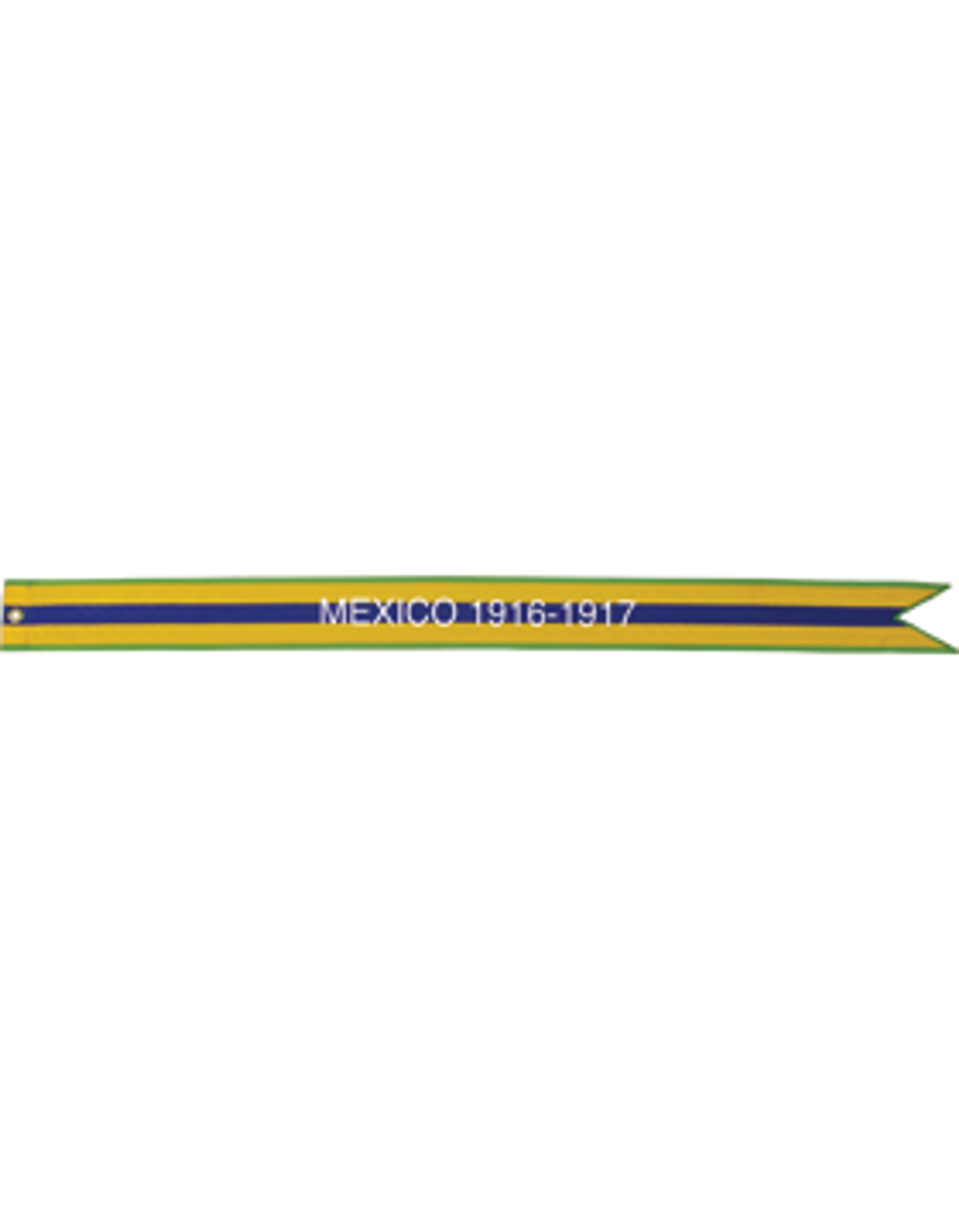Product Description
Honor the legacy of the United States Air Force with this premium Mexico 1916-1917 Battle Streamer, commemorating the U.S. military's courageous service during the Mexican Expedition. This historical accessory symbolizes the bravery and dedication of American forces as they responded to the challenges posed during a pivotal period in U.S.-Mexico relations. Perfect for veterans, history enthusiasts, and collectors, this Battle Streamer is a meaningful way to preserve and display a piece of American military history.
Key Features:
- Premium Quality: Crafted with care and precision, the Battle Streamer is made from durable, high-quality materials, ensuring it stands the test of time while retaining its vibrant colors and detail.
- Three Length Options: Available in 2-foot, 3-foot, and 4-foot lengths, this streamer is adaptable for various display preferences, from personal collections to professional exhibits.
- Brass Grommets for Easy Display: Designed for convenience, the Battle Streamer includes brass grommets for seamless hanging on flagpoles, walls, or in shadow boxes.
- Versatile Decoration: A striking addition to military ceremonies, historical reenactments, museums, and classrooms, this Battle Streamer is a powerful tribute to the Air Force's role in the Mexican Expedition.
- Educational Tool: Use this Battle Streamer as a conversation starter or teaching aid to share the significance of the 1916-1917 expedition with others.
- Thoughtful Gift: Ideal for veterans, collectors, and military history buffs, this Battle Streamer makes a memorable and meaningful gift.
Historical Significance of the Mexico 1916-1917 Battle Streamer
On March 9, 1916, irregular forces of Francisco (Pancho) Villa from the Mexican state of Chihuahua raided the small town of Columbus, New Mexico, a few miles north of the U.S. border. The next day the 1st Aero Squadron, stationed 120 miles to the east at El Paso, Texas, received orders to join the Mexican Expedition being formed at Columbus by Brig. Gen. John J. Pershing. Arriving at Columbus on March 15, the squadron, under the command of Capt. Benjamin D. Foulois, made its first reconnaissance flight over Mexican territory the following day.
On March 20 the 1st Aero Squadron moved its base to Casas Grandes, Mexico, nearly 200 miles south of Columbus and about 240 miles southwest of El Paso. General Pershing, Commander of the Mexican Expedition, established his headquarters at the nearby Mormon colony of Colonia Dublan. From Casas Grandes the squadron attempted to support U.S. Armed Forces with reconnaissance and liaison missions, but its underpowered aircraft, 7 JN-2s, could not climb over the rugged Sierra Madre Mountains to reach the cavalry columns moving rapidly to the south. The squadron moved several times before arriving on April 17 at Namiquipa, Mexico, 320 miles south of Columbus and only 160 miles northwest of the city of Chihuahua.
From Namiquipa the 1st Aero Squadron flew messages received by telegraph from Pershing’s headquarters to the far-ranging elements of the 7th, 10th, 11th, and 13th Cavalry Regiments. The cavalry continued to pursue Villa’s forces as far as Parral, Mexico, 300 miles south of the city of Chihuahua and over 600 miles south of El Paso, Texas. But by April 20, three days after arriving in Namiquipa, the 1st Aero Squadron had crashed all but 2 of its aircraft* and returned to Columbus to await replacements. A few new Curtiss R-2s arrived before June 1, but the squadron found them underpowered and unsuited to Mexican field service. During the remainder of the Mexican Expedition the 1st Aero Squadron flew only a few more operational missions.
From the beginning, the Government of Mexico had protested the American incursion into its territory, arid on June 21, 1916, Mexico’s Armed Forces attacked a detachment of U.S. cavalry at Carrizal, Mexico, 160 miles east of General Pershing’s headquarters at Colonia Dublan, just outside of Casas Grandes. The diplomatic protests and military confrontation caused the U.S. to suspend operations further inside Mexico. In September 1916 General Pershing concentrated his troops at Colonia Dublan, where they remained for the next 5 months until withdrawn on February 5, 1917.
The Mexican Expedition Campaign tested the Aviation Section of the Army Signal Corps and found its aircraft far less capable and reliable than desired. But in spite of these problems, the 1st Aero Squadron did make some significant achievements. For the first time in U.S. military aviation history, photographic equipment was used for mosaic mapping. The squadron also demonstrated the importance of aircraft for reconnaissance work in a mobile operation and provided vital, albeit limited, message service for the expeditionary force. The combat support experience would soon prove beneficial: 1 year after withdrawing from Mexico, the 1st Aero Squadron and other Army aviation units would leave for France and the battlefields of World War 1.







